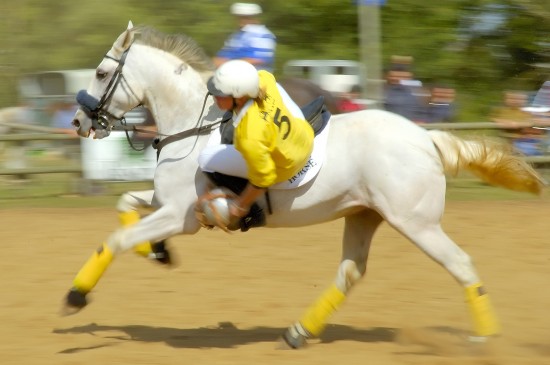
For centuries in the days before our understanding of chemistry there was the search for a process that would turn some common metal into gold. Charlatans for centuries sought deprive the wealthy of their riches by promising the secret that would make any man abundantly rich. The amazing story of a few simple fisherman in Japan who learned how to turn a very drab looking fish that was almost worthless into what is now a world-wide trade of very expensive fish. It is hard to imagine that anyone would pay scores of thousands of dollars and in some cases even hundreds of thousands of dollars for one single fish! Today in the world of Koi there are real treasures and some are willing to pay for them. In a sense these simple fishermen achieved what charlatans for centuries were never able to achieve, turn a simple fish into gold!
Early Koi History ?Carp in China
The name Koi is simply the Japanese word for 'Carp'. The real history of Koi or Carp is lost in the mists of legend but it is believed that Koi had their beginnings in an area that today we would call Iran, history would call Persia. Did the carp migrate through the waterways of Western Asia into China, or was trade the means by which carp travelled eastwards into China? We will never know. Carp seem to have arrived in China at least 2,500 years ago. History would have us believe that the son of Confucius who it is believed was born in 533 BC was presented with a carp by the king. A study of ancient Chinese artwork and sculptor demonstrates that carp were a popular subject for artists for the last two and half millennia.
Early Koi History ?Carp in Japan
Carp found their way eastwards from China to Japan probably again through trade or was it invasion? Some historians think the origins of carp in Japan stretch back as far as 200 AD. Over the years in Japan rice farmers made the carp a source of protein food. Salted carp would last the winter when other food was scarce. Rather than catch them wild these rice farmers became carp farmers to secure their winter food supplies. In time these simple rice farmers started to turn these plain-looking fish into gold.
In the middle of the 19th century the world knew little of the science of genetics. Mendel in Europe was only just starting his work on the genetics of peas and there was little understanding of how characteristics we passed on from one generation to the next, be it in plants or animals. However these simple farmers noticed that some of the fish had patches of red and later white on them. Intrigued by these abnormalities they kept them aside, regarded them as pets, and began to breed them. Without any genetic theory they developed the first colorful carp or what today we call Koi. There is little doubt as one studies Koi history that these Japanese rice farmers from the Niigata prefecture in Japan can take credit for the development of Koi. The popularity of these colorful fish grew immensely in the following decades and while today Koi can be found the world over these fish are still known as Japanese Koi. Without the dogged perseverance of these humble 19th century rice farmers the history of Koi would be very different.
Modern Koi History
The 20th century saw the continued development of the world of Koi. Koi became a popular feature at an exhibition in Tokyo in 1914 where the first tri-color Koi were exhibited. It had been a development over the previous 25 years but gained full recognition at this event. This trend was further strengthened when Emperor Hirohito was presented Koi for the Imperial Palace moat in 1914. A further development involved the cross-breeding of Koi with a mirror carp from Germany which had reflective scales. This was quickly followed with the introduction of golden scales from a different species of wild carp. From about 1920 onwards no other known mutations have been recognised by international Koi breeders.
Koi History ?Koi Now a World-Wide Hobby
After the second world war and with the development of using the plastic bag and oxygen to transport live fish a much wider distribution of Koi took place. Today it is a hobby that is to be found around the world. While there are still very expensive specimens of Koi to be found the price of regular Koi is within the reach of most people thanks to the development of the mass market for these fish. The need for space is a far greater limiting factor for Koi keepers today than the cost of the Koi.
Koi History in the 21st Century
The Japanese still call the shots in the world of Koi and probably have some of the best Koi specimens in the world. However expert Koi breeders are to be found in Europe and the USA and some local trends have challenged to the dominance of Japanese Koi breeders and associations. One example of this trend has been the Butterfly Fish developed in the USA by the Blue Ridge Fish Hatchery. Similar breeding has been started in Japan but Japan moved to ban these fish at the shows regarding them not as true Koi. This has resulted in these fish falling out of popular favour in Japan. Not so in America. While debate still rages over whether or not these fish are true Koi, they are popular and the world has the Blue Ridge farms to thank for their development. Butterfly Koi are here to stay whether or not they are true Koi.
Koi fish farms are no longer the province of Japan. Koi fish farms are to be found around the world and many of these farms are making significant strides in the development and marketing of these amazing fish. Having a Koi pond in your garden is a world-wide development. The history of Koi has been an exciting one. The humble rice farmers from the Niigata prefecture in Japan turned a common fish used as winter food into rivers of gold.
If you wish to learn more about Koi please visit http://www.koihowto.com
where we deal with a range of subjects that will expand your knowledge of these great fish.
 Coping With Atopic Dermatitis In Yorkshire Terriers
Coping With Atopi
Coping With Atopic Dermatitis In Yorkshire Terriers
Coping With Atopi
 Golden Retriever Health And Longevity
Golden Retriever
Golden Retriever Health And Longevity
Golden Retriever
 Post-surgical Complications In Spayed Dogs
Post-surgical Com
Post-surgical Complications In Spayed Dogs
Post-surgical Com
 Ten Unusual Equestrian Sports
Ten Unusual Eques
Ten Unusual Equestrian Sports
Ten Unusual Eques
 What To Expect From The Beagle’s Behaviour And Temperament
What To Expect Fr
What To Expect From The Beagle’s Behaviour And Temperament
What To Expect Fr
Copyright © 2005-2016 Pet Information All Rights Reserved
Contact us: www162date@outlook.com